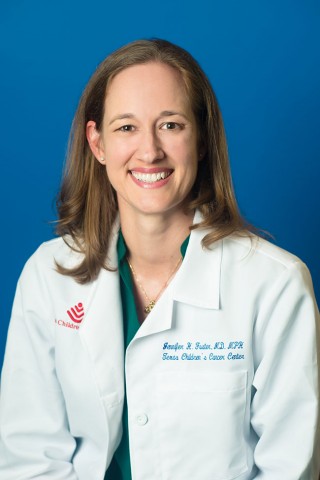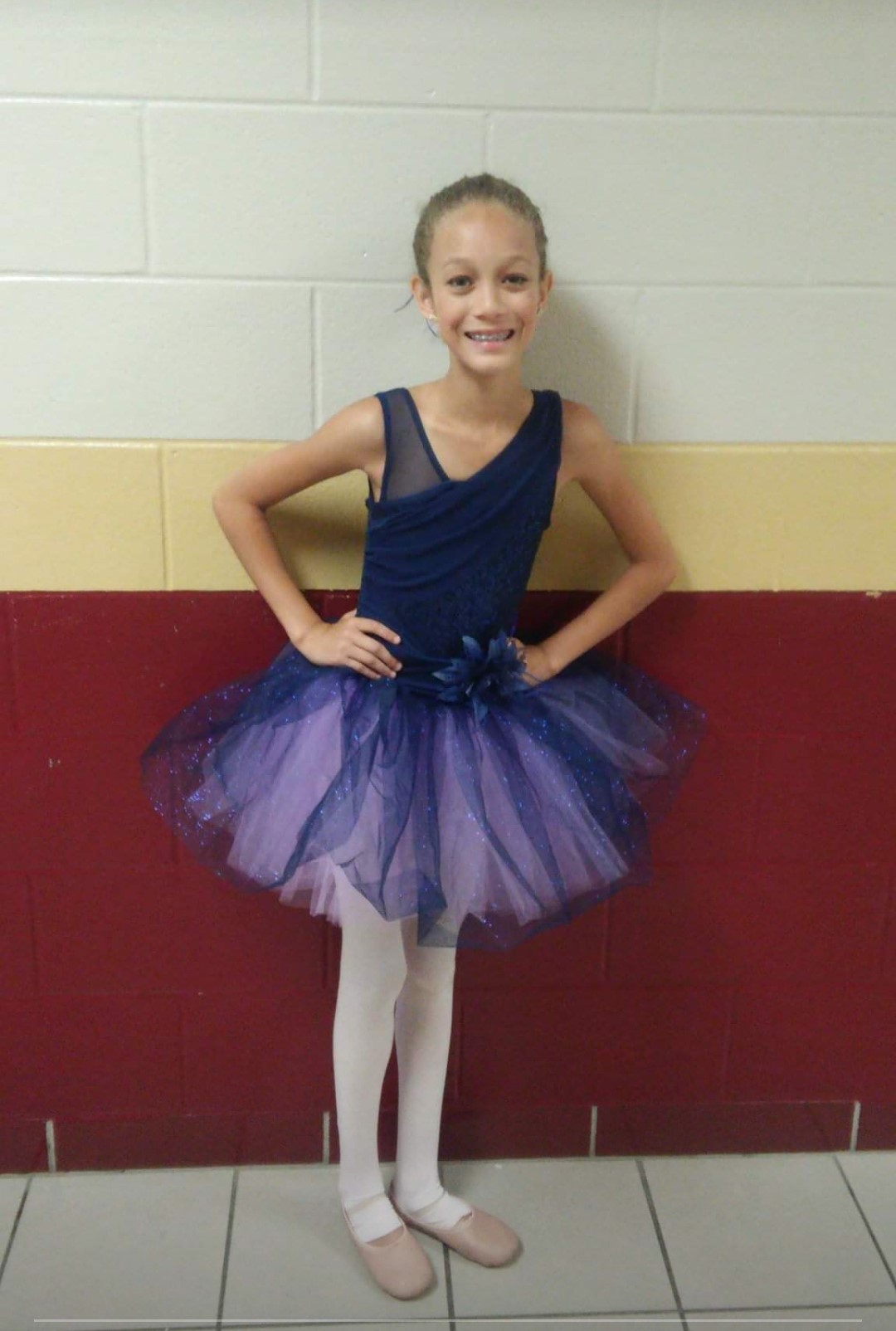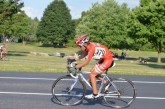
by Trish Adkins
For Eden, the trouble began when she was 10 years old. The trouble had a name: pain. It seemed normal at first—maybe a side effect from dancing or growing. But then it never went away and then, suddenly, Eden could not dance anymore.
“I knew in my heart it was more than growing pains,” said Eden’s mom, Shannon.
A MRI revealed the source of the pain: a tumor on her leg. And not just any tumor, it was a tumor so rare that it had never been seen before. They nicknamed it Eden’s Tumor. Eden’s doctor, Dr. Jennifer Foster at Texas Children’s Cancer Center turned to research to find a treatment plan for Eden. Eden went through treatment once and then her cancer returned, this time in her shoulder.
 Eden is now enrolled in a clinical trial for children with relapsed tumors. We spoke with Dr. Foster about Eden’s tumor, her treatment and how innovative clinical trials are propelling the world closer to cures.
Eden is now enrolled in a clinical trial for children with relapsed tumors. We spoke with Dr. Foster about Eden’s tumor, her treatment and how innovative clinical trials are propelling the world closer to cures.
ALSF: What type of cancer does Eden have?
Dr. Jennifer Foster (JF): Eden has a tumor that has not been described before. Our team ended up calling it a “primitive round blue cell primitive neural tumor.” But, really, we just refer to it as Eden’s Tumor, since it is the only one of its kind anyone has ever described.
ALSF: Wow, walk me through what happens when a tumor like Eden’s lands on your desk?
JF: Until we can describe the tumor, we cannot treat it. This is true for both rare and less-rare tumors. We tapped into our large team of pathologists, solid tumor oncologists, radiologists and other childhood cancer experts across the country to come up with a description of the tumor.
ALSF: What are the features that make Eden’s tumor so rare?
JF: Eden’s tumor has several features that make it so unusual. First, the tumor did not pick up on an MIBG or bone scan, which are scans used to detect neuroblastoma cells. Yet, the pathologists could tell the tumor had some characteristics of neuroblastoma. The PET scan did pick up the tumor cells in Eden’s leg, shoulder and throughout her body.
Pathologists looked at samples of Eden’s tumor under the microscope and not only saw the neuroblastoma features, but also saw some features of the common bone cancer Ewing’s sarcoma. When we sequenced the tumor to study its biology, there were no genetic hits against a wide panel of known markers of cancer.
ALSF: So, how do you treat something that isn’t anything that has existed before?
JF: We heavily relied on the pathology report to create a treatment plan that we knew to be effective against both neuroblastoma and Ewing sarcoma. We chose chemotherapy drugs known to work on both cancers as well as radiation, which we know kills both of these types of cancer cells. The treatment was effective and the tumors responded. Unfortunately, Eden relapsed 1 year off of therapy, this time in her opposite shoulder.
ALSF: What happens when a child like Eden relapses?
JF: When any child relapses, we know that the standard of care did not work and we have to try something new. Often, tumors are harder to treat after relapse. So, we turn to clinical trials and research to find potential solutions. For Eden, the biopsy of her relapsed disease showed that the tumor looked exactly the same under the microscope as it did at diagnosis. Since the first round of treatment did not work, we had to come up with a new plan. For Eden, that plan was a new clinical trial opening both at Texas Children’s Cancer Center and at other select institutions across the country.
ALSF: What is the name of the trial Eden is on?
JF: The official title of the study Eden is a part of is “ADVL1615, A Phase 1 Study of Pevonedistat a NEDD8 Activating Enzyme (NAE) Inhibitor, in Combination with Temozolomide and Irinotecan in Pediatric Patients with Recurrent or Refractory Solid Tumors”
ALSF: How does the drug work?
JF: Pevonedistat is a novel agent that we use in combination with two standard chemotherapy regiments (Temozolomide and Irinotecan). Pevonedistat may work in combination with Irinotecan and temozolomide by blocking some of the enzymes needed for cell growth, thus stopping the growth of cancer cells.
The pre-clinical lab testing of this combination has shown great promise and this drug has also showed success in clinical trials for adults with cancer. As long as Eden is responding to treatment, she will have up to 17 cycles of therapy over about a year.
ALSF: Why are childhood cancer research and clinical trials so important?
JF: The trial Eden is on represents 10 years of process—pre-clinical experiments in the lab, adult clinical trials, and the building of the infrastructure necessary to support a clinical trial. We don’t have the full story for most types of childhood cancer. Continued research and clinical trials will help us learn the full story, so we can start making the drugs and agents that can cure future children diagnosed with cancer.
ALSF: How can studying a rare, one-of-a-kind tumor help other kids battling cancer?
JF: Every piece of knowledge we gain from rare tumors like ‘Eden’s tumor’ will build and help guide us in future treatment decisions for other children; just like how the knowledge has guided us to this point of being able to help Eden.
Our Q&A with Dr. Jennifer Foster is the second in a series about Eden’s incredible story. If you missed the first installment, an interview with Eden, just head here.
 YOU CAN MAKE A DIFFERENCE for children, like Eden, who want more opportunities to receive potentially lifesaving treatments and hope for a brighter, healthier future.
YOU CAN MAKE A DIFFERENCE for children, like Eden, who want more opportunities to receive potentially lifesaving treatments and hope for a brighter, healthier future.
YOUR GIFT will fund the most promising, innovative scientific projects with the likelihood of making an impact.
YOUR SUPPORT allows Alex’s Lemonade Stand Foundation to continue to fund researchers around the country to develop less-toxic treatments and more cures for kids with cancer.
DONATE, today.

